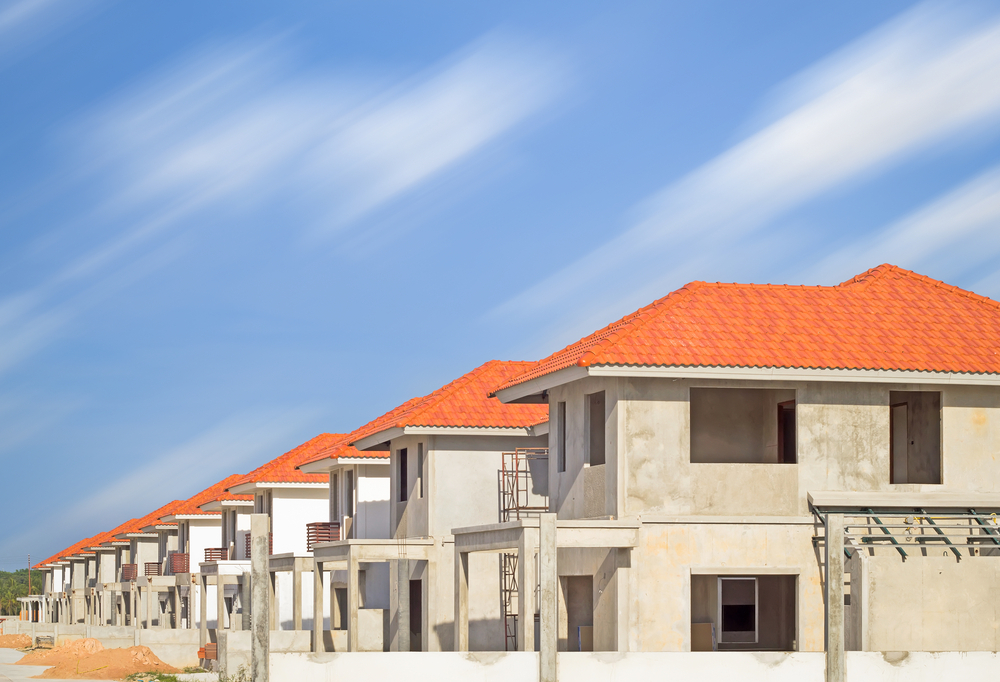How to Subdivide Your Property? Complete Details
Owning a property or planning to own one? Wondering subdivision of property but no idea how to and from where to?
In this comprehensive guide PDCD has covered all about “how to subdivide property”. Below, you can find short and detailed steps to understand the process of subdividing land in WA, Malaga.
PDCD Homes focuses on building homes by acquiring large land plots and subdividing them into smaller plots, making it easier to buy and build a home within your budget. Our team surveys and subdivides suitable land for home construction, and our town planning team is skilled in identifying the best plots for clients seeking their ideal property.
How to Subdivide your Property: PDCD
Subdivision Process in Western Australia
Subdividing land can be a highly profitable investment, with a potential completion time of less than a year, excluding hard construction. Without construction, the subdivision process in WA typically takes around 8-9 months. If construction is included, the timeline extends to 2+ years. However, PDCD has the capability to structure the development, reducing the overall time-frame by more than 6 months.
| Phase | Description | Duration |
| Initial Consultation and Research | Familiarize with WAPC guidelines and requirements. Consult subdivision consultant or town planner for advice like PDCD. | 1-3 months |
| Application Submission | Prepare and submit application to WAPC. Obtain conditional approval with specified conditions. | Up to 3 months |
| Site Planning and Demarcation | Develop detailed survey plan with a land surveyor. Demarcate new lot boundaries for each subdivided plot. | 3-5 months |
| Addressing Specific Conditions | Ensure compliance with WAPC stipulated conditions. Address street access and consider retained dwellings. | 1-2 months |
| Title Formalities | Secure separate land titles for each subdivided plot. Obtain new titles after meeting all conditions. | 2-4 months |
| Construction Phase | Commence dwelling construction for habitable spaces. | 12-24 months |
Comprehensive Steps on How to Subdivide Your Property
Local Zoning Regulations
Before subdivision, familiarize yourself with local zoning regulations, which govern property subdivisions. Contact your local planning department to obtain the zoning code and understand its application to your property, including minimum lot sizes and setback requirements.
Consult with PDCD
Subdividing a property involves legal, surveying, and engineering work. Hire a team of professionals, including a land surveyor, real estate attorney, and engineer, to navigate the process, ensure compliance with local regulations, and ensure a smooth transition.
Site Check
Conduct a thorough analysis of your property to identify its strengths and challenges. Consider factors such as topography, soil conditions, existing infrastructure, and access to utilities. This information will help determine the optimal layout for the subdivided lots and may influence the overall design of the development.
Subdivision Plan
Collaborate with your team to create a comprehensive subdivision plan, detailing lot layout, roadways, utilities, and other relevant details, while adhering to local zoning regulations and addressing potential environmental issues.
Approvals
Subdivision plans must be submitted to the local planning department for review and approval, which may involve public hearings and meetings with zoning boards or commissions. Address any concerns raised and make necessary adjustments.
Legal Matters
Once your subdivision plan is approved, you’ll need to complete the legal processes associated with property subdivision. This may include preparing and recording new property deeds for each subdivided lot, updating the property’s legal description, and obtaining any required easements or rights-of-way.
Infrastructure Development
Coordinate with contractors for subdivision plans involving infrastructure improvements, such as new roads and utilities, and ensure compliance with local building codes and regulations.
Finalizing the Subdivision
After obtaining approvals and infrastructure development, finalize the subdivision by recording new property deeds with the county or municipal clerk’s office, legally establishing new lots and enabling independent ownership.
What Are The Subdivision Methods?
| Subdivision Method | Description |
| Rear Strata (or Rear Lot) | A subdivision method creating a new lot behind an existing property. Access is typically provided by a common driveway. The rear property is separate in title, allowing for independent ownership. |
| Duplex Development | A single property divided into two separate residences, either side-by-side or front and back. |
| Triplex Development | A single property subdivided into three individual residences, each with its own entrance. Similar to duplexes but with three separate units. |
| Narrow Lot Townhouses | Townhouses designed for narrower plots, maximizing space by being elongated with multiple stories. Each townhouse is individually owned. |
| Multi Units and Apartments | A building or complex housing multiple separate residential units or apartments. Units may share common areas. Each unit is individually owned or rented. |
| Grouped Housing | Multiple dwellings constructed on a single block, featuring a mix of housing types (houses, townhouses, units) that can be sold separately. |
What Is The Smallest Land Area Eligible For Subdivision In Western Australia?
The minimum land size for subdivision is determined by multiplying the minimum allowable block size per dwelling, as defined by your suburb’s R-Code, by 2 (representing the smallest number of subdivisions feasible).
For instance, considering the minimum average land size for subdivision in various R-Zoning categories:
Minimum Average Land Size for Subdivision in R-20 Zoning:
- Each strata home or subdivided block would typically necessitate around 450sqm.
- If the intention is to subdivide the property into two equal blocks, a starting block size of at least 900sqm is required to ensure both new blocks meet the minimum requirement of 450sqm each.
Minimum Average Land Size for Subdivision in R-30 Zoning:
- Each strata home or subdivided block would generally require approximately 300sqm.
- To subdivide the property into two equal blocks, a starting block size of at least 600sqm is needed to ensure both new blocks maintain a minimum size of 300sqm each.
Minimum Average Land Size for Subdivision in R-40 Zoning:
- Each strata home or subdivided block typically requires around 220sqm.
- To subdivide the property into two equal blocks, a starting block size of at least 440sqm is necessary to ensure both new blocks adhere to the minimum of 220sqm each.
What Are The Prevalent R-Codes In Western Australia?
In Western Australia, the Residential Design Codes, commonly known as R-Codes, encompass a spectrum of density classifications that influence the permissible number of dwellings on a given parcel of land.
The key R-Code designations include R10, R12.5, R15, R20, R25, R30, R35, R40, R50, R60, R80, R100, and R160.
Here are some notable R-Codes in WA:
R10: Characterized by low density, typically accommodating large lot residential developments.
R40: Represents medium density, suitable for a variety of housing types, including single houses, duplexes, and grouped dwellings.
R60: Indicates higher density, more inclined towards multi-unit dwellings such as apartments and townhouses.
R80: Signifies an even higher density, commonly observed in urban areas proximate to major amenities and public transport.
R100: Denotes very high density, typically reserved for inner-city locales or areas immediately adjacent to major transit hubs or commercial zones.
Zoning R-Codes
Zoning is crucial in determining housing density in an area, ensuring an adequate concentration of high-density housing in areas with higher demand. When purchasing property for subdivision or subdividing existing property, it is essential to align with WA R-Codes. R-Codes identify building requirements in residential zones, making it easier to clarify home design and reduce planning disputes.
Key features dictated by R-Codes include street setback, lot boundary setback, open space, building height, street surveillance, and garage width. These features help determine the distance from the street, the percentage of land covered by the home, building height, street surveillance, and garage width. The WA State Government website provides more information on these features. By adhering to R-Codes, homeowners can ensure consistency in home designs and reduce planning disputes.
Conclusion:
Subdividing your property requires careful planning, adherence to local regulations, and collaboration with a team of professionals. By following mentioned guidance and seeking expert guidance, you can unlock the full potential of your property and create a subdivision that benefits both you and the community.
For those unfamiliar with the term ‘subdivision,’ it essentially involves the creation of distinct land titles from a property that originally housed a single residence, thereby enabling the potential for multiple properties on that particular block.
PDCD aims to let you know easily about how to subdivide your properties. We hope we did that!!!
FAQs:
Is Property Subdivision Permissible?
Determining the feasibility of subdividing your property entails a comprehensive review of local regulations and zoning laws. Zoning regulations specify the permissible land uses in specific regions, and these regulations can vary from one area to another. To gain clarity on the specific rules and prerequisites for subdividing land in your locality, it is advisable to consult with your local council or planning department.
What factors affect the cost of land subdivision?
Dividing land into smaller parcels can incur significant expenses, influenced by variables like the property’s location, size, existing infrastructure, and local development criteria. The overall cost of the subdivision process may encompass professional fees, infrastructure enhancements, council and planning charges, legal expenses, and service connections.
Vital contributors to a smooth process include the involvement of land surveyors, town planners, and lawyers. Adhering to local council standards may necessitate infrastructure upgrades, such as improving roads, drainage systems, and utility connections. Legal fees may arise for document preparation and the establishment of new titles for the subdivided lots. If new utilities are needed, additional costs may be incurred.
How can you verify the zoning of your property in Western Australia?
To determine your land’s R-Code, use the Department of Planning Land Enquiry Tool, which provides comprehensive information about subdivision potential. Alternatively, consult with a professional land developer to understand the possibilities of backyard subdivisions or new block subdivide opportunities. Early involvement with these professionals can optimize development prospects, as unforeseen complications like sewage connections can result in significant costs later. Therefore, it’s important to have the right experts’ guidance from the outset to avoid unforeseen complications and ensure a smooth development process.
What is strata title property?
Strata titles enable individuals to own a portion of a property and share the remaining areas, such as apartments, units, and townhouses, where they own a living space and share common areas.
What is green title subdivision?
Green title property refers to land with no shared common areas, typically housed in free-standing homes. In Western Australia, most land is green title and is typically sold in subdivisions with separately titled lots. These subdivisions require services to be provided to each lot, requiring frontage to mains and a service connection point for each proposed lot.
Is your block suited for strata or green title subdivision?
Not every block qualifies for subdivision. The suitability of your block for strata or green title subdivision hinges on factors such as land zoning, block dimensions, infrastructure, accessibility, market demand, economic viability, development approval, and adherence to local council policies.


